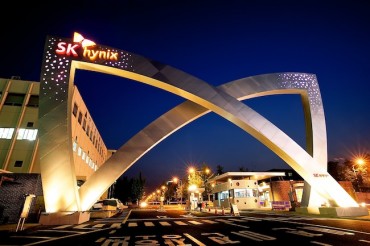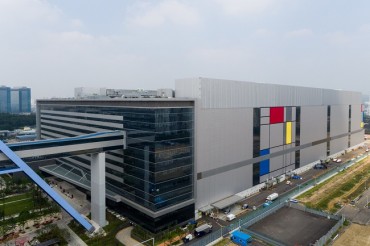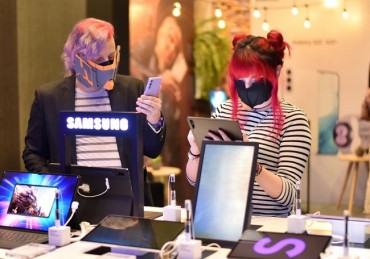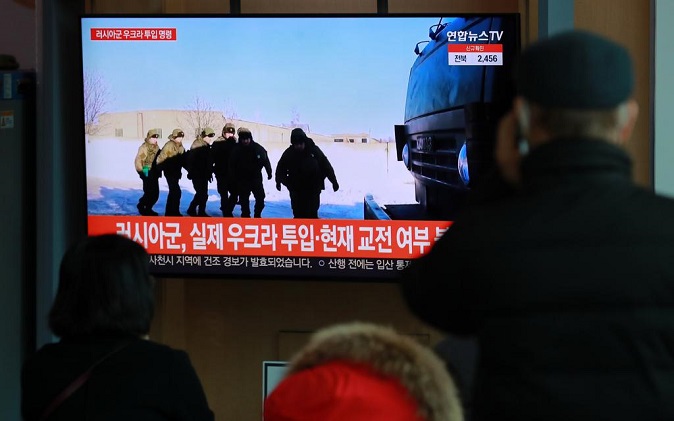
People watch a TV news report on the Ukraine crisis at Seoul Station in central Seoul on Feb. 20, 2022. (Yonhap)
SEOUL, Feb. 24 (Korea Bizwire) — A military confrontation between Russia and Ukraine could disrupt supply of raw materials, potentially exacerbating the ongoing global chip shortage, analysts said Thursday.
Russia and Ukraine produce raw materials, such as neon, used in chipmaking processes, raising concerns that the escalating tension could disrupt the supply of key materials.
According to market research firm TrendForce, Ukraine supplies nearly 70 percent of the world’s highly purified neon gas used to etch circuit designs into silicon wafers to produce semiconductors.
While a potential supply disruption in Ukraine will not halt chip production altogether in the short term, a reduction in neon gas supply “will likely lead to higher prices which may increase the cost of wafer production,” TrendForce said.
Research group Techcet, which focuses on materials market, also highlighted the supply-chain threat from the Ukraine crisis.
The company said the U.S. relies heavily on Russia and Ukraine for a number of raw materials, including the etching gas C4F6, used in advanced chip making processes.
If the US imposes more sanctions on Russia, Moscow could withhold such critical materials to hobble U.S. chip production, the company said.
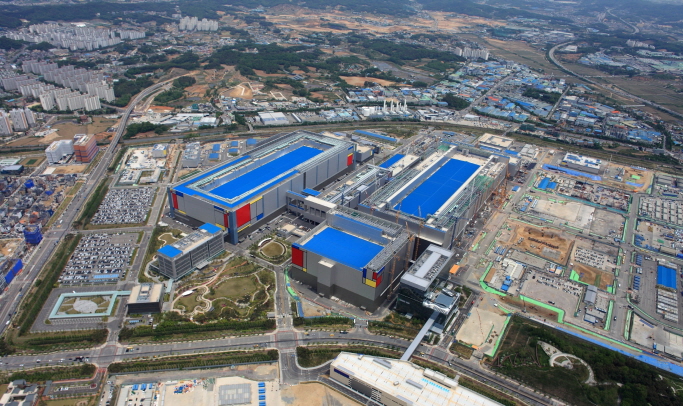
This photo provided by Samsung Electronics Co. on May 21, 2020, shows the company’s chip plant in Pyeongtaek, south of Seoul.
Omdia, another market research firm, noted that the last time Russia invaded Ukraine in 2014, neon prices hiked 600 percent, sending wide-reaching repercussions and causing havoc in the global chip industry.
Samsung Electronics Co. and SK hynix Inc., said there was no immediate impact from the Russia-Ukraine crisis on their chip production and that they were watching the development closely.
The two are the world’s largest memory chip suppliers with a combined market share of more than 70 percent.
Samsung said production was running business-as-usual, largely thanks to “diversified sources for materials.”
“We have enough inventory (of raw materials). We are well-prepared, so there is no reason for concern,” SK hynix CEO Lee Seok-hee said during a media event last week.
South Korean companies rely more on China than on Ukraine for neon, with 67 percent versus 23 percent, Lee Woong-chan from Hi Investment & Securities Co. said in his latest report.
“But they cannot avoid a spike in prices, even though negative impact from the crisis could be relatively small,” he said.
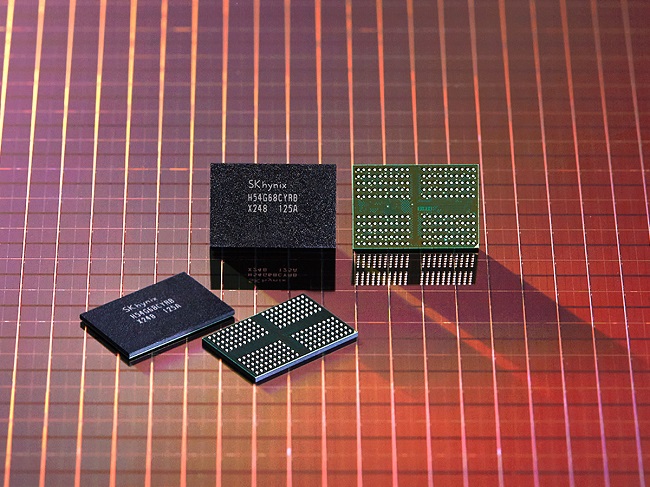
This photo provided by SK hynix Inc. on July 12, 2021, shows the company’s 1anm DRAM using extreme ultraviolet lithography technology.
For other raw materials, like palladium which is also used in making chips, Russia is the world’s largest provider, accounting for around 40 percent of global production.
Lee said the ongoing tension will have limited impact on Korean companies, as they have diversified their import sources over the years, but a hike in raw material prices is “inevitable” if the tensions escalate.
“As the U.S. is highly dependent on Russia and Ukraine for palladium and neon gases, any disruption in chip production in the U.S. could have negative impact on the production of finished products,” he said.
“In that case, it could also potentially slow demand for memory chips.”
(Yonhap)



